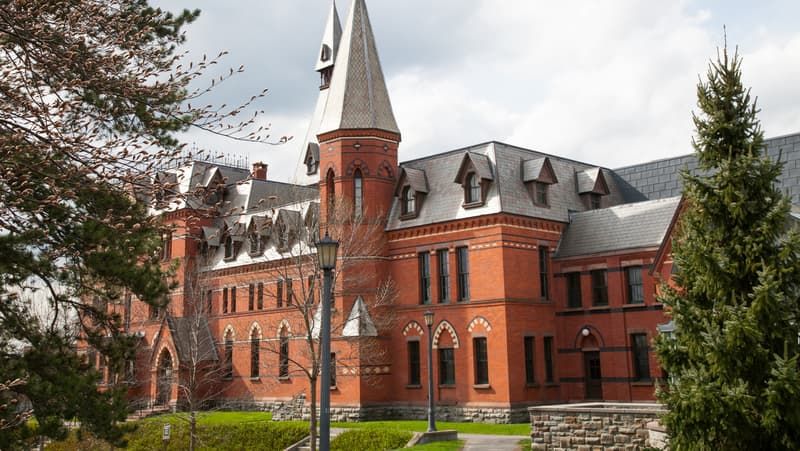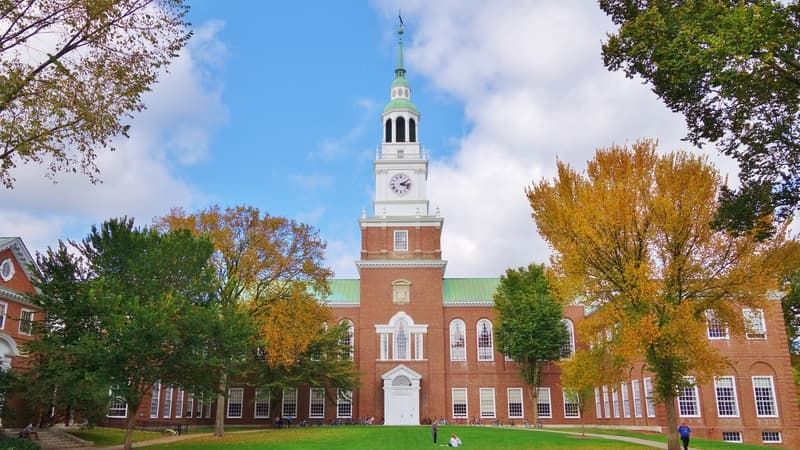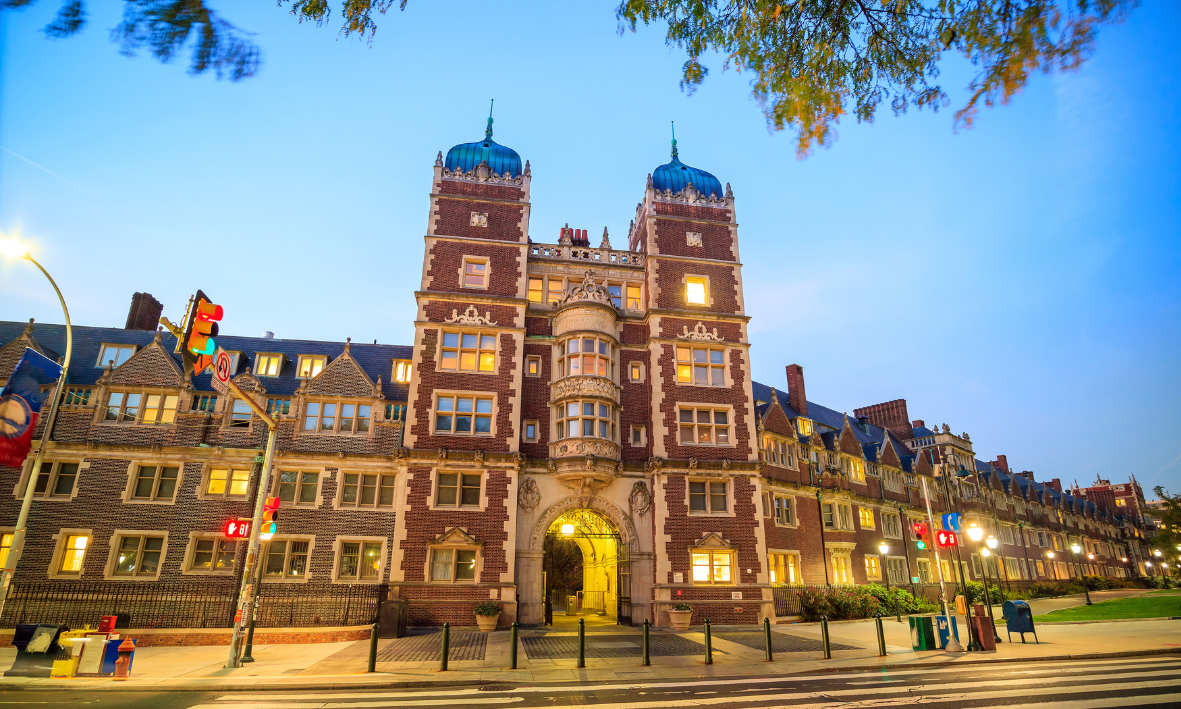What Are the 12 Ivy League Universities?
Read now/f/64062/1920x800/1a9d108148/ivy-league.jpg)
/f/64062/1000x563/a92750af60/easiest-ivy-league.jpg)
Jump To
Easiest Ivy Leagues
Hardest Ivy Leagues
Tips to Get In
When building your college list, you may wonder which Ivy League schools are the hardest or easiest to get into. When using recent overall Ivy League acceptance rate data as a guide, Harvard, Columbia, Yale, and Princeton are the most competitive Ivies, while UPenn, Brown, Dartmouth, and Cornell are those that are slightly less selective.
Keep in mind however that the eight Ivy League schools are all very hard to get into, despite these differences.
Harvard, Columbia, Yale, and Princeton have recent acceptance rates slightly below 5%, while UPenn, Brown, Dartmouth, and Cornell have recent acceptance rates slightly above 5%.
For example, Cornell is the easiest Ivy League to get into, but over the past three years its acceptance rate has hovered just below 8% — so Cornell is still extremely competitive.
Harvard is overall the hardest Ivy to get into — with an acceptance rate below 4% over the past four years.
In this blog post we determine which Ivy League schools are hardest and easiest to get into using overall acceptance rate data, but these data are more complete or more up to date at some Ivies compared to others.
Therefore, keep in mind the following limitations as you use Ivy League admissions data for your own application strategy:
With these factors in mind, we can now take a look at the most recent data available that show the acceptance rates at each Ivy League school:
| Ivies | Class of 2028 Acceptance Rate | Class of 2029 Acceptance Rate |
|---|---|---|
| Cornell | 7.8% | N/A |
| Dartmouth | 5.4% | 6.0% |
| Penn | 5.4% | N/A |
| Brown | 5.2% | 5.7% |
| Princeton | 4.6% | N/A |
| Yale | 3.7% | 4.6% |
| Columbia | 3.85% | 4.3% |
| Harvard | 3.6% | N/A |
Ithaca, New York

| Overall Acceptance Rate | Early Acceptance Rate | Crimson Student Acceptance Rate |
|---|---|---|
| 8.4% | ~17.50% | 46.7% |
Cornell is considered the "easiest" Ivy League to get into because it has the highest Ivy League acceptance rate. While statistically speaking, it's easier to get into Cornell, it's still challenging.
It's also important to remember that students apply directly to one of Cornell's eight undergraduate colleges and each college has its own acceptance rate. If you want to see which of Cornell's colleges is the easiest and hardest to get into, check out their Institutional Research and Planning page.
Hanover, New Hampshire

| Overall Acceptance Rate | Early Acceptance Rate | Crimson Student Acceptance Rate |
|---|---|---|
| 6.0% | 17% | 30% |
Dartmouth College currently ranks as the second easiest Ivy League school to get into.
One of the reasons Dartmouth is a more accessible Ivy is because many students opt to submit their applications during the early decision round.
Dartmouth's early acceptance rate is significantly higher at 17.0%, despite an increase in early applicants, the school's early acceptance rate remains relatively high for a competitive university.
Philadelphia, Pennsylvania

| Overall Acceptance Rate | Early Acceptance Rate | Crimson Student Acceptance Rate |
|---|---|---|
| 5.4% | ~14% | 38.6% |
Based on its overall acceptance rate of 5.4% for the Class of 2028, UPenn is the third easiest Ivy League to get into, but virtually on par with Dartmouth. While UPenn hasn't officially released their early admission data, our strategists estimate the early acceptance rate to be around 14%.
Like all Ivy League schools, UPenn is still highly selective. With a faculty to student ratio of 6:1, UPenn's intimate environment allows students to get individualized attention from some of the best teachers in the world.
Cambridge, Massachusetts
| Overall Acceptance Rate | Early Acceptance Rate | Crimson Student Acceptance Rate |
|---|---|---|
| 3.6% | 8.7% | 23.1% |
Harvard is the oldest institution of higher education in the US and consistently ranks in first place as the hardest Ivy League to get into. Founded in 1636, Harvard offers students a world-class education from some of the most brilliant professors in the world. Harvard is also centrally located near other prestigious universities like Boston University, MIT, Northeastern University, and Tufts University.
Harvard looks for self-motivated students who are ready to change the world. If you hope to attend Harvard, consider how you can add value to the campus community and how you'll carry the Harvard name out into the world
New York City, New York

| Overall Acceptance Rate | Early Acceptance Rate | Crimson Student Acceptance Rate |
|---|---|---|
| 4.3% | ~12% | 37.5% |
Columbia is the second hardest Ivy League to get into, with an acceptance rate of 4.3%. Students from around the world dream of studying at Columbia University. This prestigious university, located in the heart of New York City, is home to Columbia College, The Fu Foundation School of Engineering and Applied Science, and the School of General Studies. Originally called King's College by the royal charter of George II of Great Britain, it was renamed Columbia College in 1784.
If you want to get into Columbia, you should be a passionate learner in and out of the classroom. You should also consider its location in New York City and how you can utilize the city's vast resources.
New Haven, Connecticut

| Overall Acceptance Rate | Early Acceptance Rate | Crimson Student Acceptance Rate |
|---|---|---|
| 4.6% | 10.8% | 26.7% |
With an overall acceptance rate of 4.6%, Yale University ranks as the third hardest Ivy League school to get into this year.
Yale’s single-choice early action option limits applicants to applying early to only one school in the Ivy League. This policy pushes students to carefully consider their top choice before applying, ultimately leading to a high caliber of applicants and maintaining Yale’s status as one of the most challenging Ivies to enter.
Students around the world compete for coveted spots at Ivy League schools. If you want to get one of those spots, you have to stand out from the rest of the world's top students. But that's not easy!
With that in mind, it's good to take an inclusive approach when building your college list, and apply to a range of schools with different levels of selectivity — your safety, target, reach, and extreme reach schools.
Once you've ensured you have some other schools on your list for back up, it's time to do everything possible to get into your dream school — into an Ivy League school.
Here are five tips to boost your chances.
Not all Ivies are the same. While they all share commonalities, each Ivy has its own "personality." As you research each school, you will find you're drawn to particular ones. You’ll discover certain schools offer programs that fit your career goals, clubs or organizations you're passionate about, or maybe they just feel more like home.
Don't pick a school just because it carries a prestigious name. Apply to the colleges that you can see yourself attending. Explain why that school needs you and how you will thrive on campus and in the community.
Applying early has many advantages! Statistically speaking, you'll have a higher chance of getting into an Ivy League if you apply early because the pool of applicants is much smaller. It might be challenging to get all the application pieces ready earlier, but it will be worth it. If you decide to apply early, carefully read each school's early-round requirements before applying. Some schools only allow you to apply to one school in the early round, and others require you commit to that school if you're admitted.
Most Ivy League applicants have stellar grades and high test scores. To stand out from the rest of the elite students, consider becoming an "expert" in a particular subject or activity. Admissions teams love seeing you grow, thrive, and lead in your area of interest.
Ivy League schools want to know that you can take your passions into your own hands, find success in the work, and serve the world around you.
Starting from fall 2025, many Ivy League schools are reinstating the SAT as a requirement for applying, so far this includes Harvard, Dartmouth, Brown, and Yale.
Submitting your SAT/ACT helps your application stand out, especially if you have a good SAT score or a good ACT score.
If you apply to a test-optional Ivy and decide to skip submitting your SAT or ACT test results, the rest of your application needs to be stellar. However, even if the rest of your application is perfect, good SAT or good ACT results will help it shine even more.
One of the most important aspects of your application is your extracurriculars, especially if you're applying to the Ivy League.
Instead of looking for applicants who have tried many different activities, Ivy League schools prefer applicants that commit deeply to a particular area, invest significant time, and demonstrate growth and impact through their pursuits.
Choose an extracurricular that reflects your genuine passion. It’s okay if your interests change down the line. What matters is showing you’re capable of impressive achievements now, as your current accomplishments are a promising sign of your future potential.
As you fine tune your college search list, you now know which Ivy League schools are hardest and easiest to get into, at least statistically speaking.
However, a big takeaway is that all of the Ivy League schools are highly competitive, so you should be sure you submit strong applications and have a solid application approach, with a strategy that examines the pros and cons of applying in the early round and which ensures you're applying to a range of safety, target, and reach schools you're interested in — including non-Ivy League schools — since Ivy League schools, even Cornell and Dartmouth, are all very selective.
You can also benefit from a much higher statistical acceptance rate by partnering with Crimson Education. Our students, guided by expert strategists and application mentors, get into Ivy League schools at rates far above averages. Overall, Crimson students are 7x more likely to get into their dream school than other students.
To get help with your next steps or big decision points, and to learn more about our personalized approach, schedule a free feedback session. It's a great way to meet one of our friendly advisors, talk over what's truly possible, and learn how we can help make your college journey less stressful and more successful, all at the same time.
What Makes Crimson Different